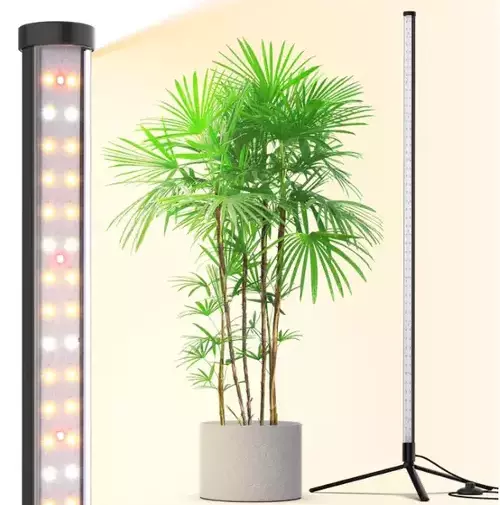The Calathea Species have earned the love of most plant collectors due to their vivid colour and exotic foliage. Their foliage beauty is mesmerizing and catches everyone’s eyes. Most people will recommend Calatheas as indoor ornamentals, and it makes sense if you want to make a room attractive and charming with all its former beauty. However, these beauties can be challenging to take care of, especially for a beginner Calathea parent. One common issue that indoor gardeners face is Calathea leaves turning Yellow.
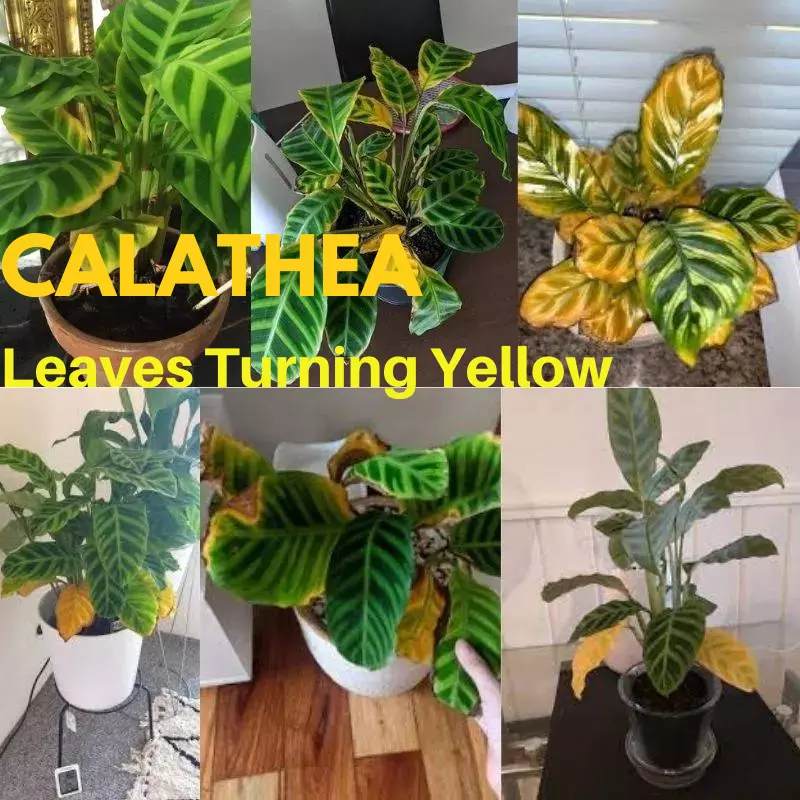
It is disappointing for gardeners when their plant starts to have issues. If you are struggling with your Calathes and wondering why your plant’s leaves are turning yellow, this article is specifically for you. Here is how to protect your Calathea leaves from turning yellow and eventually dying.
Prominent Family Members: Calathea White Star, Calathea Leopardina, Calathea Fasciata, Calathea Roseopicta, Calathea Flamestar, Calathea Lutea, Calathea Freddie
Essential Products:
Is Yellowing of the Leaves Pretty Common in Calathea Plants?
Leaves becoming yellow issue is very common in Calatheas. There could be several reasons for Calathea’s beautiful leaves to turn yellow.
Calathea species hail from the Tropical dense jungle of Brazil due to its stunning leaf patterns and colours. Calathea plants are sensitive and need particular care for thriving, and lacking vital growth requirements can cause yellow leaves on the calathea plant. To keep your calathea plant happy indoors and outdoors, you must provide a native land atmosphere.
Moreover, the yellow leaves of Calathea indicate that the plant is not happy in its surroundings, and to figure out what is wrong with the plant, first learn what makes Calatheas happy and what they dislikes.
Reasons for Leaves Turning Yellow
The reasons for turning Calathea leaves yellow are;
Calathea Leaves Turning Yellow due to Overwatering
Overwatering most probably is the cause your plant starts turning its foliage yellow. Many people who are bingers in indoor plant care assume that much water, much the plant will flourish, wrong!
However, overwatering is a factor that can harm plant health more than you think. Watering too often makes soil supersaturated, and plants can’t absorb water more than it requires.
The harmful effects of overwatering are pot soil will become soggy or waterlogged, and plant roots can’t breathe well; the result will be the yellowing of the leaves. Soggy or wet soil takes time to dry, and prolonged exposure of the plant’s roots to water can develop root rot diseases.
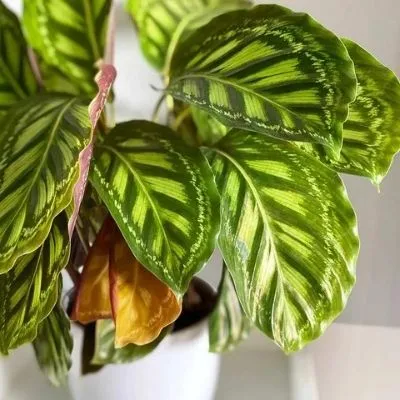
Leaves turning brown
Calathea plants remain happy and flourish in moist soil, but it doesn’t mean they keep watering Calathea plants daily. Make a scheduled routine to water your plant to keep the soil moist.
If you find out that the yellowing of the leaves is due to the soggy soil, then immediately replace the wet soil with dry soil. To avoid further overwatering, start using the moisture meter. It’s a tool that helps you know the potting soil’s moisture. A gauge on it shows either soil is dry, moist, or soggy.
Furthermore, manually check the potting soil moisture by inserting your finger up to two inches into the soil. If the soil is dry, wait for one more day, recheck the soil, and water it.

Calathea Leaves Turning Yellow due to Underwatering
Similar to overwatering, underwatering al also harmful to plants’ health. Less watering makes soil dry, and plants will not get enough water and minerals for the stable growth of the plant.
Water is the foundation of all life and the main component of plant cells. Without sufficient water, biological processes such as photosynthesis are severely affected. A reduced photosynthesis results in decreased plant growth, including root development.
Moreover, the plant has small delicate hair-like roots that penetrate the soil for water absorption. In the case of a lack of water, the plant’s roots can get destroyed due to dry soil. The plant goes under stress, and its overall health is affected. One of the symptoms of an unhappy plant is that the leaves start turning yellow due to a lack of water and nutrients.
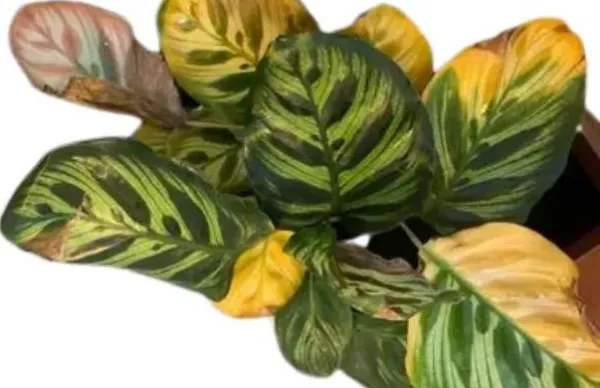
Calathea Medallion leaves yellowing
Calathea plants can be challenging to care for when it comes to watering. Keep checking the soil moisture, and then water your calathea according to the soil condition. After watering, the soil must drain well. However, it is also essential to ensure the soil does not become too dry, leading to problems.

The Plant Takes Time to Adjust
Calathae plant lovers like to bring new Calathea varieties to their indoor collections. After adding a new Calathea beauty, you might notice that particular plant may start turning its leaves yellow. It could be due to environmental changes, and the plant needs time to adjust to its new surroundings.
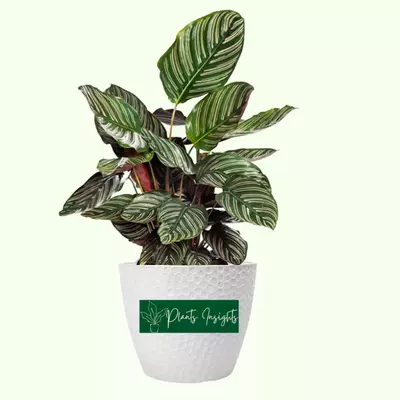
Calathea plant
Just keep the Calathea in the required temperature and humidity, and after a few days, you will notice that the leaves will start green again.
Furthermore, Calathea plants are pretty sensitive and happy with their particular environment. They require a copycat of Brazilian tropical rainforest temperature, humidity, and light.
It would help your Calathea to thrive if you install a plant humidifier near your plants to increase the humidity in the surrounding air. High moisture level will prevent the crispy edges and browning tips of the Calathea’s gorgeous leaves.

Calathea Leaves Turn Yellow due to the Quality of Water
Calathea plants are native to the Brazilian rainforest, with an annual rainfall of 1,000 to1,500 millimetres. Therefore, Calathea species thrive with rainwater supply as rainwater is the purest form of natural water. Another reason for the yellowing of the Calathea plant leaves can be the type of water you give to your plant.
Most people use tap water for houseplants that contain different kinds of chemicals. For instance, tap water may include chlorine, fluorine, and other minerals, which can affect the health of houseplants. These chemicals present in tap water adversely affect sensitive plants like Calatheas.
Sometimes, these minerals and chemicals can cause Calathea’s leaves to change to yellow. Using tap water could be unwise if you want the plant to flourish.
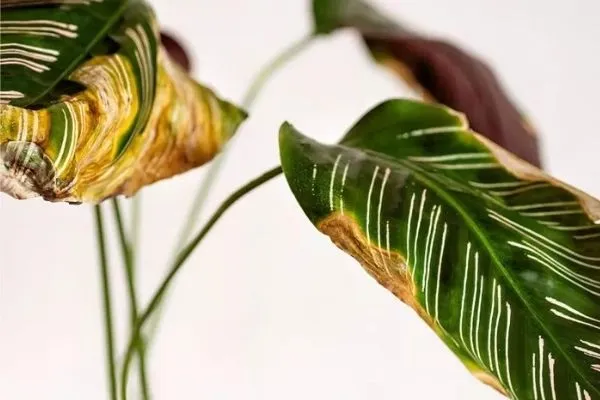
Yellowing-and-browning-of-the-leaves
Water your plant with distilled, filtered, or rainwater as Calathea grows in the jungle and flourishes in rainwater.
Before using the tap water, we recommend leaving it at room temperature for a night. The minerals in the water will settle at the bottom, and the chances of your plant getting affected become less.
On the other hand, some people find this challenging and prefer buying distilled water from stores. Some people benefit their plants by purchasing a water filtration system that filters the water and eliminates all harmful chemicals.
It would help if you kept in mind that buying a new filtration system for your home can be costly. Still, it’s worth the price as there are many advantages of having a water filtration system in your home. It may help for many other reasons, including watering your plants.

Calathea Leaves Turn Yellow due to Light Intensity
One reason for the yellowing of the leaves could be the improper light. Calathea plants hail from the tropical forest of Brazil, where they grow in diffused sunlight. Due to the dense canopy of the tall tree, sunlight can’t reach directly to the ground. Calathea and other shade-lover plants thrive happily in that low-intensity bright light.
In case, Calathea plant leaves start turning yellow due to excessive light exposure; please change the spot of your Calathea. If your Calathea is in the front of the window, there are chances it can get exposed to direct sunlight. Therefore, please avoid placing your Calathea in front of any sun rays receiving window, and the best practice is to put your plant a few feet away from the window where it can get sufficient enough diffused light.
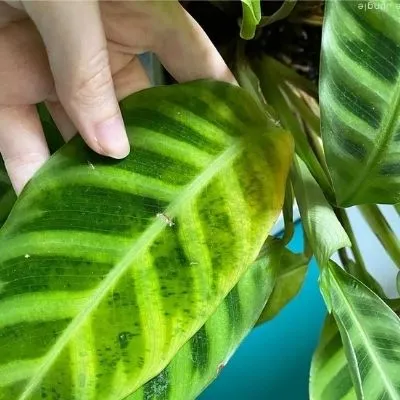
Yellowing of the foliage
In addition, placing the plant in dark spots will also affect the Calathea’s leaves’ colour. Leaves will be unable to perform photosynthesis in the usual way and start turning yellow. It would help your Calathea to thrive if you supplement it with some grow lights. Believe me light exposure matters a lot in the speed of growth and the size of the leaves. If you want bushy Calathea with glossy huge leaves please try investing in some good grow light to help your plant.
In short, place your Calathea indoor and outdoor in a medium bright diffused light to thrive well.

Calathea Leaves Turn Yellow due to Temperature
The fluctuation in temperature can stress your Calathea plant. Stress may lead to the yellowing of leaves. The optimal temperature for the Calathea plant is between 62 ° F to 81 ° F.
Colder temperatures can seriously shock the plants, and you may notice that the plant would look a bit shabby after a night of cold. Therefore, moving your plant somewhere warmer is recommended if the temperatures are likely to fall relatively low.
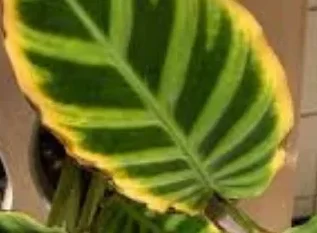
Yellowing of leaves
Ideally, these plants should be inside a temperature-controlled environment. An ideal temperature for Calatheas is 70 degrees Fahrenheit. However, avoid putting your plant near drafty windows or doors, as brief exposure to frigid temperatures may cause problems for these temperature-sensitive plants.

Calathea Leaves Turn Yellow due to Humidity
Calathea plant’s beautiful foliage can become yellow due to a less humid atmosphere. These plants are native to tropical climates; hence low humidity won’t benefit them.
Calathea plants flourish tremendously in native land where humidity is 90% or more. However, providing that high humidity in your home is not necessary. Preferably you need to maintain 50 % to 70% humidity near Calathea plants with the help of humidifiers or place the pot on a water-filled pebble tray.
Another way to increase humidity around the plant is by gathering all-in-door plants in one spot. The transpiration process will increase the humidity level.
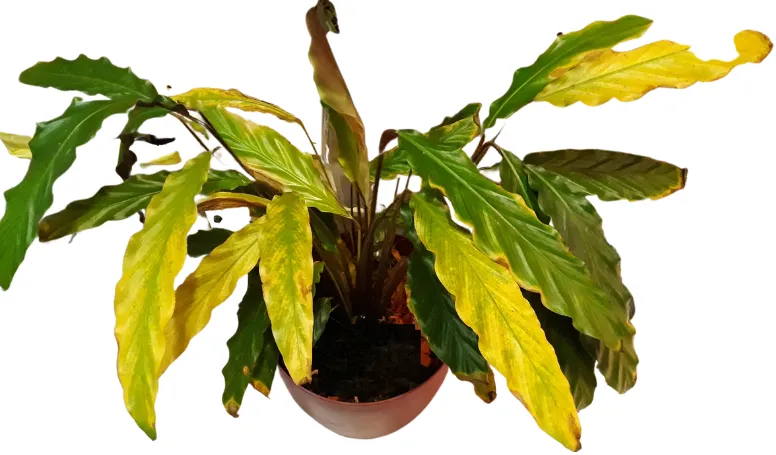
Calathea Rufibarba leaves Yellowing
Furthermore, the winter months can be arid in North America, and Calathea cannot tolerate dry weather. Therefore, you can use portable humidifiers to provide humidity to your plants, or you could buy a whole-house system humidifier.
To increase the humidity, some people also mist their plants. To prevent the leaves from drying out, you can spray them occasionally. However, it is likely easier to use a humidifier to provide the required humidity.

Calathea Leaves Turn Yellow due Over-Fertilization
Excessive fertilization can also cause issues in Calathea plants. The plants don’t require much fertilizer to grow and flourish; you must be very careful about how much fertilizer you use. If you feed too much, it may turn the leaves colour yellow.

Overfertilized leaves
Feeding the plant monthly throughout the growing season might benefit seeing good Calathea growth. Make sure to feed a small amount of fertilizer, and don’t forget to dilute to ensure it’s not too strong for plants.

Calathea Leaves Turn Yellow due to Poor Drainage
While watering your plants, there are many things to remember, including proper drainage. If your plant’s leaves start yellowing, check the water drainage. In case of drainage hole blockage or poor drainage soil, the plants would struggle to survive. Moreover may lead to over-watering issues, which may not end well in the Calathea species.
The first thing to know about the Calathea is the thickness of the soil and the soil type. If the soil is too thick, there can be a lot of issues as water cannot go through the soil, and it will get stuck near the roots, which can cause root rot and symptoms of this issue would be yellowing of leaves.
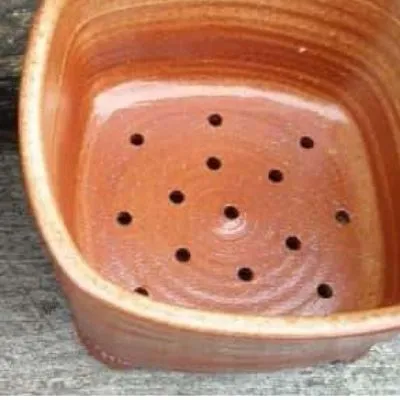
Pot with drainage holes
The best soil type for your Calathea is the soil which is not compact, fluffy and allows water to drain quickly. The potting mix shall be able to hold moisture, but it also needs to have good capability of aeration so the roots can breathe easily.
The wrong type of soil can also be a significant turning point for your plant; therefore, selecting the soil matching your plant’s demands is extremely necessary. Therefore, please choose moisture-retaining, well-draining and nutrient-rich soil with good aeration quality for your Calathea.
The pot must have an adequate drain hole. Many home gardeners overlook the point while selecting a fancy pot; therefore, please always consider the drain hole when buying a container for Calathea.

Calathea Leaves Turn yellow due to Pest Infestation
Pests can pose a significant issue for your Calathea plant, and you’ll have to be vigilant to safeguard it. Insects like spider mites, aphids, mealybugs, and scale can be a serious threat to health of your plant.
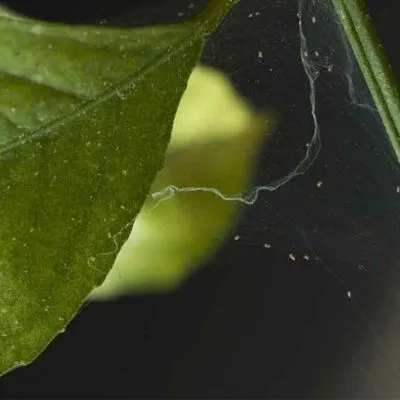
Spider mite web on leaf and stem
Some pests like Spider mites don’t typically appear until the area is dry. The invasion of Spider mites indicates the low humidity level indoors, and you shall raise the humidity levels to deprive the pests of a favourable environment.
Treating your plant with insecticides is also an effective solution to get rid of pests. However, it is essential to be cautious while applying any insecticide. We recommend using any new solution on one or two leaves to verify the result before applying it to the whole plant.

Calathea Leaves Turn Yellow due to Fungal Infections
Fungal infections can cause leaves to change colour to yellow. There are numerous fungal diseases to be aware of; however, a fungus found in soil commonly referred to as Fusarium is among the more popular ones.
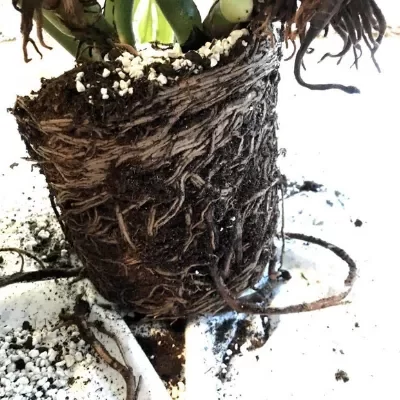
Root rot
The fungal infection can cause both wilting and yellowing at the same time. In case of a roots’ fungal infection, we recommend removing the plant from the pot, cleaning the roots, pruning the infected parts, and planting the Calathea into a new pot.
You may also apply a fungicide to the soil to stop the infection from worsening. The plant is likely to get under stress; however, it will recover with proper care and treatment.
Frequently Asked Questions
Should I cut yellow leaves off Calathea?
We recommend to prune the yellowed or browned leaves to save plant energy for healthy leaves. In addition, it’ll improve the appearance of your Calathea plant. Try Cutting the leaves at the base with sharp, sterilized scissors.
Can yellow leaves turn green again?
The green colour of the leaves is due to Chlorophyll, and once a leaf loses it, the leaf starts turning yellow, and you can’t turn it back to green again. The plant will abandon that yellow leaf, and it’s better to prune that damaged leaf.
How do I know if my Calathea is dying?
Usually, a dying Calathea will show symptoms like leaves turning yellow or brown. In addition, the plant may have leaves wilting and drooping. Finally, check if the roots are dried out; dry roots indicate it’s a lost cause. Unfortunately, your Calathea is done.

Final Thoughts
There are a lot of factors you need to consider when looking after the Calathea plant. Many factors could cause leaves to turn yellow, and it could be challenging to determine what’s wrong initially.
The best thing to do is read about the subject and then analyze the situation. You may be able to identify clues to what’s happening to determine what’s the issue.
As we’ve mentioned earlier, there are cases when there’s no serious issue. The Calathea plant can be stressed in the new environment and require adjusting time.
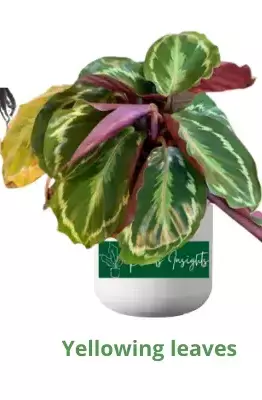
Calatheas are not easy to care for; however, they reward you with their gorgeous foliage with proper care. You’ll be enthralled by the plant’s design as long as you can endure how the plant requires your attention.
It will be easy to maintain things if you’ve learned more about Calathea plants. You’ll get great results and keep the plants looking great for long periods with the proper amount of commitment.


